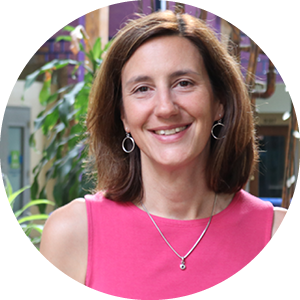Inclusion vs. Belonging: What’s the Difference and How can SEL Help?
I was recently scrolling through my LinkedIn feed and an image popped up with a quote from Dr. Muna Abdi - “It is not inclusion if you invite people into a space you are unwilling to change.” It got me thinking about the efforts so many are involved in related to diversity, equity, and inclusion. That last word inclusion always leaves me a little uncomfortable because it suggests otherness and conjures up images of its counterpart, exclusion. I hear former teachers in my head reminding us kids to include everyone in playtime at recess and the perhaps not-so-subtle groan that inevitably followed such directions. “Being included” was never something an excluded kid wanted to feel because it was always an obligation, a burden, not a true goal. Someone must first be excluded in order to be included. And to be excluded indicates, perhaps, a lack of belonging, an otherness that doesn’t initially fit. Instead, isn’t our larger goal to create environments where there is no exclusion to start with and therefore inclusion isn’t necessary? Don’t we want environments where there is no dominant culture, no “norm” to include people in?
Social Emotional Learning (SEL) has a role to play in helping to create these kinds of environments. SEL, when done right, helps young people develop skills to understand themselves and the other students around them, including where they have similarities, differences, and things to learn from one another. It teaches them the value and richness of having multiple perspectives and experiences, gives them a lens through which to view diverse environments, and helps them understand that their own thoughts, ideas, and opinions, while important and valid, are just one lens through which to view the world.

That is why I am so excited about the newly revised New York State Social Emotional Learning (SEL) Benchmarks that were released and posted at the end of November 2022. In many ways, they represent what true inclusion, without obligation or exclusion, is all about. The benchmarks were revised by the New York State Education Department (NYSED) staff and consultants from WestEd with the help of a core group of expert advisors. This core group focused on equity, revising every standard with an eye toward alignment with the state’s Culturally Responsive and Sustaining Education Framework (CR-S). When the new draft came out, the document was presented to the Board of Regents and then was subsequently posted on the NYSED SEL website with little fanfare. The lack of fanfare is the exact point – these much-improved and equity-centered benchmarks are now the norm. There was no need for a long explanation of why they were revised or how they are replacing the old benchmarks in order to be more inclusive. They simply are. Because equity-centered SEL is just SEL. Equity-focused SEL benchmarks are just SEL benchmarks. These are the right benchmarks for all children, youth, and adults and every school has an obligation to implement them.
As 2023 gets underway, it is time to focus on true change. With that in mind, we are pleased to share a new resource with you, developed in partnership with Penfield Central School District. This document crosswalks the new state SEL Benchmarks with NYSED’s Culturally Responsive Sustaining Education Framework and Learning for Justice’s Social Justice Standards. This resource highlights where the three frameworks align and overlap. Our hope is that this document will help educators to see how teaching SEL can contribute to creating environments where all students and staff understand and value their own and others' identities, experiences, and perspectives – where true belonging, rather than simply inclusion, occurs.

